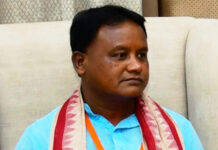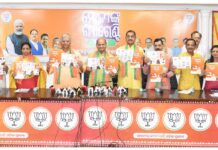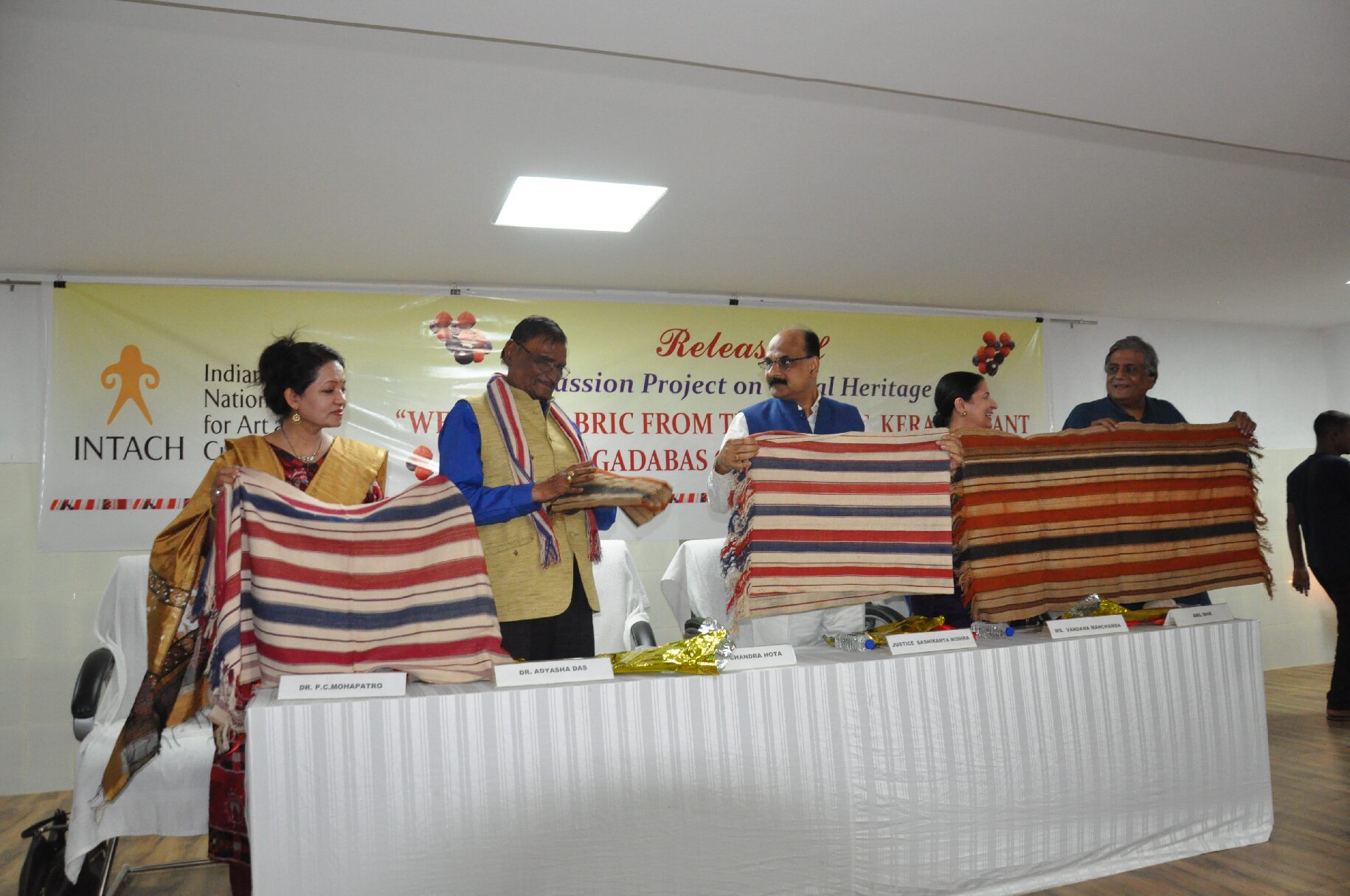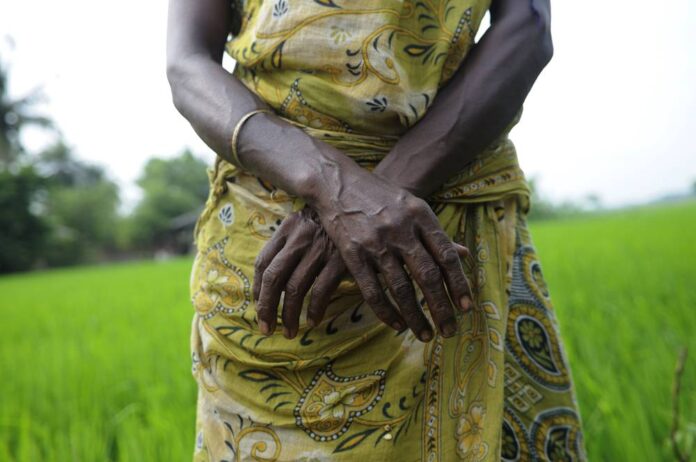The number of widowed and divorced women in the country State/UT-wise as per Census 2011 is at Annexure-I. Census 2011 does not give data on destitute women in the country. However, Ministry of Women and Children implements Swadhar Greh Scheme for destitute women as per which, number of destitute women staying in these Grehs is 8163 in 2021-22.The Government is implementing several schemes/programmes being run for welfare, rehabilitation, empowerment, education and providing employment to such women which inter-alia include the following:
Swadhar Greh Scheme: The Scheme caters to primary needs of women in difficult circumstances – women and girls rendered homeless due to family discord, crime, violence, mental stress, social ostracism or are being forced into prostitution and are in moral danger. The scheme through the provisions of shelter, food, clothing, counseling, training, clinical and legal aid aims to rehabilitate such women in difficult circumstance economically and emotionally. Under Swadhar Greh Scheme vocational and skill upgradation training is provided for economic rehabilitation of women.
Home for Widows: A Home for widows has been set up in Vrindavan, Uttar Pradesh with a capacity of 1,000 inmates to provide widows a safe and secure place of stay, health services, nutritious food, legal and counselling services.
One Stop Centres (OSCs), popularly known as Sakhi Centres, aim to facilitate women affected by violence (including domestic violence) with a range of integrated services under one roof such as Police facilitation, medical aid, legal aid and legal counselling, psycho-social counselling, temporary shelter, etc.
Women Helpline (WHL) Scheme provides 24 hours emergency and non-emergency response to women affected by violence, both in public and private spaces by linking them with appropriate authority such as Police, One Stop Centre, Hospital, Legal Services, etc. WHL also supports women in distress with rescue van and counselling services in addition to providing information about women welfare schemes and programs across the country. Women can dial 181 short code to avail services from Women Helpline.
The Mahila Shakti Kendra Scheme: The Mahila Shakti Kendra Scheme of Ministry of Women and Child Development aims to empower rural women through community participation and to create an environment in which they realize their full potential.
Indira Gandhi National Widow Pension Scheme: Under this scheme, widow pension is provided to the widows belonging to Below Poverty Line (BPL) households. This is a sub-scheme under National Social Assistance Programme (NSAP) of Ministry of Rural Development. Under the scheme, central assistance @ Rs. 300/- per month is provided to widows in the age group of 40-79 years and the pension amount is enhanced to Rs 500/- per month on attaining 80 years.
The National Social Assistance Programme (NSAP) is a fully funded Centrally Sponsored Scheme targeting the destitute to be identified by the States and UTs with the objective of providing a basic level of financial support. Under NSAP, central assistance of Rs. 200 – 300/- is provided in pension to senior citizens (60 years and above), widows (40-79 years) and for disabled persons.
In alignment with the goals under Nation Health Policy (NHP) 2017, the Government announced the ambitious and holistic Ayushman Bharat Programme with its twin pillars of Health and Wellness Centres and the Pradhan Mantri Jan Arogya Yojana (PMJAY) in September 2018. Under Jan Aarogya Yojana, coverage is provided to poor and vulnerable families. This is likely to help improve women’s access to health care services.
Government of India launched the Stand Up India scheme on 5th April 2016 to promote entrepreneurship amongst women, SC and ST categories, i.e., those sections of the population understood to be facing significant hurdles due to lack of advice/ mentorship as well as inadequate and delayed credit. The Scheme facilitates bank loans between Rs. 10 lakh to Rs. 1 crore to at least one scheduled Caste/ Scheduled Tribe borrower and at least one woman borrower per bank branch of Scheduled Commercial Banks for setting up Greenfield enterprises in trading, manufacturing and services sector.
Government has set up the Pradhan Mantri Kaushal Kendras under the Pradhan Mantri Kaushal Vikas Yojana across the country. Emphasis has been laid on creating additional infrastructure both for training and apprenticeship for women, flexible training delivery mechanisms such as mobile training units, flexible afternoon batches along with local need-based training to accommodate women and ensuring safe and gender sensitive training environment of women trainers, equity in remuneration and complaint redressal mechanism. The Mahatma Gandhi National Rural Employment Guarantee Act, 2005 (MGNREGA) seeks to ensure employment in rural households, mandating that at least one third of the jobs generated should be given to women. The MGNREGA Guidelines have also made special provisions to encourage the participation of women, including giving preference to women (especially single women) and older persons for work on worksites nearer to their residences, child care facilities at the worksite in case more than five children under 6 years of age are present, adequate representation of women in the MGNREGS staff, ensuring that widows, deserted women and destitute women are provided 100 days of work, awareness and outreach activities to ensure that all wage seekers (including women) are able to handle bank procedures, treating pregnant and lactating mothers as a special category and provision of suitable work for them etc.
Pradhan Mantri Shram Yogi Maan-dhan (PM-SYM) has been launched to ensure old age protection for Unorganised Workers who are not covered by any other pension scheme. The unorganised workers including women, mostly engaged as home based workers, street vendors, mid-day meal workers, head loaders, brick kiln workers, cobblers, rag pickers, domestic workers, washer men, rickshaw pullers, landless labourers, agricultural workers, construction workers, beedi workers, handloom workers, leather workers, audio-visual workers and similar other occupation whose monthly income is Rs 15,000/ per month or less and belong to the entry age group of 18-40 years.
Pradhan Mantri Mudra Yojana (PMMVY) has been initiated by Government, inter alia, for facilitation self-employment. Under PMMVY, collateral free loans upto Rs. 10 lakh are extended to micro/small business enterprises and to individuals to enable them to setup or expand their business activities. Majority of the beneficiaries under this yojna are women.
Prime Minister Awaas Yojana (PMAY-G): This scheme aims to provide ‘Housing for All’ through provision of pucca house with basic amenities to all houseless households and households living in kutcha and dilapidated house in rural areas by 2022. This will also benefit the neglected, abandoned and destitute widows.
Pradhan Mantri Awaas Yojana (PMAY-U): This is a Scheme with a vision for facilitating Housing for All by 2022 started from 17.06.2015. Under this scheme, central assistance is provided to States/UTs in addressing the housing requirement of Economically Weaker Sections (EWS) including slum dwellers in the urban areas. However, under Credit linked Subsidy Scheme (CLSS) component of the Mission, LIG, MIG I & MIG II segments are also covered.
Deendayal Antyodaya Yojana- National Urban Livelihood Mission (DAY-NULM): DAY-NULM is implemented in statutory towns to reduce poverty and vulnerability of urban poor households, for improvement in their livelihoods on a sustainable basis. The mission provides for broadening of coverage to include families of disadvantaged groups like SCs, STs, Women, Minorities, disabled etc. subject to maximum of 25 percent of the above urban poor population.
Atal Pension Yojana (APY): This scheme is implemented with an objective to create a universal social security system for all Indians, especially the poor, the under privileged and workers in the unorganized sector. The scheme is open to all citizens of India between 18-40 years of age having a saving bank account in a bank or post office.
Integrated Programme for Older Persons: The objective of the Scheme is to improve the quality of life of the Senior Citizens, including women, by providing basic amenities like shelter, food, medical care and entertainment opportunities and by encouraging productive and active ageing through providing support for capacity building of State/ UT Governments/Non-Governmental Organizations (NGOs)/Panchayati Raj Institutions (PRIs)/ local bodies and the community at large.
Scheme for Development of Particularly Vulnerable Tribal Groups (PVTGs): There are certain groups among Scheduled Tribes which have declining or stagnant population, low level of literacy, pre-agricultural level of technology and are economically backward. These groups are among the most vulnerable sections of our society as they are few in numbers, have not attained any significant level of social and economic development and generally inhabit remote localities having poor infrastructure and administrative support. 75 such groups in 18 States and one UT have been identified and categorized as Particularly Vulnerable Tribal Groups (PVTGs). In 1998-99, a separate 100% Centrally Sponsored for exclusive development of PVTGs was started. Based on the knowledge and experiences gathered in implementation of the scheme, it has been revised with effect from 17.09.2019 to make it more effective
National Family Benefit Scheme (NFBS): The ministry of Rural Development Implements National Family Benefit Scheme (NFBS) under which monetary grant of Rs. 20,000 is given as lump sum assistance to the bereaved household in the event of death of the bread-winner.
Annapurna Scheme: Under Annapurna Scheme of the Ministry of Rural Development, ten kg of food grain is given to those eligible aged persons who have remained uncovered under the Indira Ghandhi National Old Age Pension Scheme (IGNOAPS).
Nari Arthik Sashaktikaran Yojana: The Ministry of Social Justice and Empowerment implements Nari Arthik Sashaktikaran Yojana to support Scheduled Castes, Single Women/Widows to take up income generating activities.
Assistance for vocational training of widows of ex-servicemen: The Ministry of Defense provides financial assistance for vocational training of widows of ex-servicemen, treatment of serious diseases of non-pensioner ex-servicemen/widows and daughter’s marriage/widows’ remarriage.
Details of the funds sanctioned, released and utilized by the State/UTs during each of the last three years and the current year under Swadhar Greh Scheme are at Annexure-II. The number of women benefitted under Swadhar Greh Scheme during last three years State/UT-wise is at Annexure-III.
This information was given by the Union Minister of Women and Child Development, Smt. Smriti Zubin Irani, in a written reply in Lok Sabha today.
AS
Annexure-I
Number of Widowed and Divorced Women in the Country
| Female of all ages | ||
| Widowed | Divorced | |
| INDIA | 43261478 | 909573 |
| State – JAMMU & KASHMIR (01) | 283650 | 11081 |
| State – HIMACHAL PRADESH (02) | 293475 | 4549 |
| State – PUNJAB (03) | 928158 | 18471 |
| State – CHANDIGARH (04) | 24496 | 863 |
| State – UTTARAKHAND (05) | 387215 | 3922 |
| State – HARYANA (06) | 773297 | 7720 |
| State – NCT OF DELHI (07) | 456613 | 10805 |
| State – RAJASTHAN (08) | 1983634 | 23758 |
| State – UTTAR PRADESH (09) | 4856188 | 56819 |
| State – BIHAR (10) | 2238793 | 14760 |
| State – SIKKIM (11) | 13717 | 676 |
| State – ARUNACHAL PRADESH (12) | 31787 | 1189 |
| State – NAGALAND (13) | 39496 | 4150 |
| State – MANIPUR (14) | 77990 | 4483 |
| State – MIZORAM (15) | 28569 | 11068 |
| State – TRIPURA (16) | 164969 | 6308 |
| State – MEGHALAYA (17) | 84825 | 7017 |
| State – ASSAM (18) | 1156042 | 45722 |
| State – WEST BENGAL (19) | 3792184 | 125744 |
| State – JHARKHAND (20) | 1027878 | 12672 |
| State – ODISHA (21) | 1612627 | 29845 |
| State – CHHATTISGARH (22) | 973787 | 30871 |
| State – MADHYA PRADESH (23) | 2160609 | 44272 |
| State – GUJARAT (24) | 2015742 | 88753 |
| State – DAMAN & DIU (25) | 6816 | 249 |
| State – DADRA & NAGAR HAVELI (26) | 7378 | 348 |
| State – MAHARASHTRA (27) | 4520764 | 154274 |
| State – ANDHRA PRADESH (28) | 4297481 | 66691 |
| State – KARNATAKA (29) | 2989429 | 27959 |
| State – GOA (30) | 77935 | 858 |
| State – LAKSHADWEEP (31) | 2448 | 296 |
| State – KERALA (32) | 2010984 | 46856 |
| State – TAMIL NADU (33) | 3856398 | 45185 |
| State – PUDUCHERRY (34) | 73579 | 1060 |
| State – ANDAMAN & NICOBAR ISLANDS (35) | 12525 | 279 |
Annexure-II
Details of the funds sanctioned, released and utilized by the State/UTs under Swadhar Greh Scheme during each of the last three years and the current year
(Rupees in Lakhs)
| S.
No. |
States/UTs | Amount Sanctioned/Released during year 2018-19 | Amount
Utilized During year 2018-19 |
Amount Sanctioned/Released during year 2019-20 | Amount
Utilized during 2019-20 |
Amount Sanctioned/Released during year 2020-21
|
Amount
Utilized during 2020-21 |
Amount Sanctioned/Released during year 2021-22
|
|
|
Andhra Pradesh | 0 | 0 | 190.93 | 0 | 0 | 0 | ** |
|
|
Assam | 152.60 | 152.60 | 143.51 | 143.51 | 0 | 0 | ** |
|
|
Andaman & Nicobar Island |
7.27 |
7.27 |
7.27 |
7.24 |
3.96 |
3.95 | 7.26 |
|
|
Arunachal Pradesh | 18.05 | 18.05 | 9.69 | 9.69 | 10.48 | ** | ** |
|
|
Chandigarh | 6.64 | 7.99* | 7.99 | 7.99 | 8.45 | 8.45 | ** |
|
|
Chhattisgarh | 30.25 | 30.25 | 22.95 | 21.35 | 22.89 | 22.89 | 20.75 |
|
|
Delhi | 16.10 | 9.5 | 18.38 | 17.72 | 13.10 | ** | ** |
|
|
Gujarat | 0 | 0 | 18.31 | 0 | 15.26 | ** | ** |
|
|
Haryana | 3.39 | 3.39 | 0 | 0 | 0 | 0 | ** |
|
|
Himachal Pradesh | 0 | 0 | 5.45 | 3.05 | 3.35 | 6.53* | 9.13 |
|
|
Jharkhand | 0 | 0 | 18.17 | 7.88 | 0 | 0 | ** |
|
|
Jammu & Kashmir | 36.20 | 36.20 | 38.87 | 38.86 | 27.76 | 27.76 | 25.64 |
|
|
Karnataka | 274.35 | 274.35 | 221.67 | 201.53 | 301.31 | 272.84 | ** |
|
|
Kerala | 69.59 | 0 | 32.26 | 0 | 71.11 | ** | ** |
|
|
Madhya Pradesh | 46.09 | 47.55* | 162.05 | 144.52 | 53.01 | 72.97* | 74.35 |
|
|
Maharashtra | 0 | 0 | 0 | 0 | 0 | 0 | ** |
|
|
Mizoram | 81.09 | 49.55 | 71.97 | 69.23 | 0 | 0 | 1.71* |
|
|
Manipur | 424.30 | 424.30 | 267.08 | 267.08 | 313.74 | ** | ** |
|
|
Meghalaya | 0 | 0 | 0 | 8.58 | 36.36 | ** | |
|
|
Nagaland | 25.69 | 25.69 | 13.08 | 13.08 | 0 | 0 | ** |
|
|
Odisha | 456.79 | 531.97* | 286.73 | 240.47* | 642.96 | 642.40 | 5.10* |
|
|
Punjab | 8.00 | 0 | 9.58 | 0 | 0 | 0 | ** |
|
|
Puducherry | 20.06 | 20.06 | 7.99 | 7.99 | 21.17 | 21.17 | 10.80 |
|
|
Rajasthan | 0 | 0 | 87.19 | 0 | 0 | 0 | ** |
|
|
Sikkim | 6.72 | 6.72 | 10.64 | 10.47 | 10.47 | 10.47 | 10.65 |
|
|
Tamil Nadu | 409.75 | 405.22 | 160.12 | 155.69 | 432.35 | ** | ** |
|
|
Telangana | 116.09 | 116.09 | 299.16 | 219.16 | 205.26 | ** | ** |
|
|
Tripura | 46.23 | 43.24 | 26.17 | 21.36 | 84.60 | 80.92 | 49.28 |
|
|
Uttar Pradesh | 0 | 0 | 0 | 0 | 0 | 0 | ** |
|
|
Uttarakhand | 0 | 0 | 0 | 0 | 0 | 0 | ** |
|
|
West Bengal | 0 | 0 | 0 | 0 | 155.67 | 127.14 | 218.85 |
*including previous year’s unspent balance.
** Documents not received.
Annexure-III
Details of the number of women benefited under Swadhar Greh Scheme during each of the last three years and the current year State/UT-wise
| S.No | State Name | Beneficiaries
2018-19 |
Beneficiaries
2019-20 |
Beneficiaries
2020-21 |
Beneficiaries
2021-22 |
| 1 | Andhra Pradesh | 780 | 901 | 433 | 438 |
| 2 | Arunachal Pradesh | 30 | 16 | 22 | 22 |
| 3 | Assam | 510 | 510 | 242 | 242 |
| 4 | Andaman and Nicobar (UT) | 0 | 8 | 9 | 9 |
| 5 | Bihar | 0 | 0 | 0 | 0 |
| 6 | Chandigarh | 30 | 17 | 8 | 11 |
| 7 | Chhattisgarh | 90 | 84 | 46 | 52 |
| 8 | Dadra & Nagar Haveli | 0 | 0 | 0 | 0 |
| 9 | Daman & Diu | 0 | 0 | 0 | 0 |
| 10 | Delhi | 60 | 33 | 41 | 41 |
| 11 | Goa | 0 | 0 | 0 | 0 |
| 12 | Gujarat | 120 | 120 | 117 | 117 |
| 13 | Haryana | 30 | 0 | 0 | 0 |
| 14 | Himachal Pradesh | 1 | – | 9 | 9 |
| 15 | Jammu & Kashmir | 90 | 160 | 27 | 27 |
| 16 | Jharkhand | 90 | 14 | 18 | 18 |
| 17 | Karnataka | 1380 | 1383 | 1462 | 1445 |
| 18 | Kerala | 210 | 473 | 165 | 165 |
| 19 | Lakshadweep | 0 | 0 | 0 | 0 |
| 20 | Madhya Pradesh | 240 | 240 | 273 | 273 |
| 21 | Maharashtra | 1500 | 1500 | 126 | 126 |
| 22 | Manipur | 690 | 664 | 431 | 431 |
| 23 | Mizoram | 330 | 112 | 90 | 88 |
| 24 | Meghalaya | 60 | 60 | 15 | 15 |
| 25 | Nagaland | 60 | 60 | 34 | 34 |
| 26 | Odisha | 2340 | 2340 | 1667 | 1667 |
| 27 | Punjab | 60 | 30 | 34 | 34 |
| 28 | Puducherry | 30 | 30 | 10 | 10 |
| 29 | Rajasthan | 180 | 180 | 203 | 203 |
| 30 | Sikkim | 30 | 22 | 18 | 18 |
| 31 | Tamil Nadu | 1050 | 1050 | 864 | 864 |
| 32 | Telangana | 570 | 831 | 389 | 389 |
| 33 | Tripura | 120 | 120 | 64 | 64 |
| 34 | Uttar Pradesh | 390 | 390 | 344 | 342 |
| 35 | Uttrakhand | 120 | 120 | – | 0 |
| 36 | West Bengal | 1440 | 1440 | 806 | 802 |
*****







































